Please cite as:
O’Malley, Eoin. (2024). “Ireland After the 2024 EP Elections: The Centre Holds … Just About.” In: 2024 EP Elections under the Shadow of Rising Populism. (eds). Gilles Ivaldi and Emilia Zankina. European Center for Populism Studies (ECPS. October 22, 2024. https://doi.org/10.55271/rp0074
DOWNLOAD REPORT ON IRELAND
Abstract
The 2024 European Parliament elections in Ireland came on the back of a rise in the prominence of immigration as an issue. Although Ireland had seen significant migration in the early to mid-2000s, the large number of migrants at this time had no significant impact on politics or voting. Nor was Ireland a country that saw any significant anti-EU sentiment. Thus, Ireland could be seen as an anomaly in Europe. In the aftermath of the COVID-19 pandemic, there was a sudden rise in the numbers in Ireland seeking international protection (asylum seekers). Most of these came as a direct result of the Russian invasion of Ukraine, and again, Ireland saw a positive reaction to inward migration even though the country accommodated a comparatively high number of Ukrainian refugees per head of population despite the country’s geographic distance. There had previously been ethnonationalist parties on the ballot paper in European and national elections, but they had never really featured. In 2024 none got elected, although some did in the concurrent local elections. The vote for some explicitly populist ethnonationalist parties was greater than ever before. This result occurred partly because Sinn Féin, another populist–nationalist (but not wholly ethnonationalist) party, saw its support drop dramatically. It suggests, however, that Ireland may not remain the anomaly it has been. In all about a third of the voting electorate chose parties or candidates that can be categorized as populist.
Keywords: migration; Ireland; populism; EU Pact on Migration; farmers
By Eoin O’Malley * (School of Law and Government, Dublin City University, Ireland)
Introduction
While electorally successful populism has always existed in Irish politics, the 2024 European election campaign and results in Ireland saw the emergence of a type of populism that had not hitherto been seen. Appeals, for instance, to a ‘pure Irish people’ that is distinct from a ‘corrupt elite’ are common not just in contemporary politics but in the nationalist politics on which the Irish state is founded. But there had never been an appetite in Ireland for any sort of ‘othering’ of migrants (or indeed other minorities). Although the results of the 2024 elections generally returned moderate, non-populist politicians, the centre parties’ success belies the emergence of a stronger chauvinistic ethnonationalism, indicating a possible direction of travel towards increased levels of populism. This chapter will outline the existing and emerging populist parties present in Ireland and then set out the context of the rise of migration as an issue since Ireland’s last general election in February 2020. This background leads into a discussion of the 2024 campaign, an outline of the results, and, finally, a discussion of trends.
Populist parties in Ireland
For many years, Ireland was an anomaly in having no electorally successful, hardline-ethnonationalist populist outfit, as most other European countries have. The standard explanation for this absence is that Ireland has an established nationalist–populist party that is left-leaning and explicitly progressive (i.e., pro-migrant rights). In turn the reason for this might be that the narrative of Irish nationalism is ‘small guy nationalism’, given that the Irish ‘story’ is of forced emigration, with no ‘great past’ to which the country might return (O’Malley, 2008). Sinn Féin, an explicitly left–populist party, was directly linked to the Provisional Irish Republican Army (IRA), which killed thousands of people during the Troubles from the late 1960s to 1998. While much of that campaign of violence was clearly sectarian (and thus ethnonationalist), following its transition to normal politics in the aftermath of the Good Friday Agreement (also known as the Belfast Agreement) in 1998, Sinn Féin has espoused what it called ‘civic nationalism’, although it continues to champion a particular type of cultural nationalism that excludes those living in Northern Ireland who identify as British.
Sinn Féin was largely responsible for suppressing support for conservative ethnonationalism when immigration rose in the mid-2000s to where about 17% of the population in Ireland was foreign born (up from negligible levels in the early 1990s). It opposed a referendum in 2004 to change the origin of citizenship from jus soli to one based on the child’s heritage. Yet it remained outside the mainstream, being ‘Eurocritical’, opposing all new EU treaties, which because of Irish law must be passed by referendum. It was particularly critical of what it saw as the neoliberal bent of EU institutions.
Sinn Féin support rose in the 2010s as it adopted a more populist line. It adopted the policy approach led by small left-wing parties in opposing water charges, suggesting that the charges were a prelude to privatization designed to benefit elite supporters of the main governing party, Fine Gael. Sinn Féin used populist communications strategies to categorize Fine Gael and the main opposition party at the time, Fianna Fáil, as two sides of the same elite coin. There was some truth to this; these were not parties with strong ideological divisions, and in 2016, Fianna Fáil had signed a confidence and supply agreement to support a new minority Fine Gael government, enabling Fine Gael to remain in power. Shortly before becoming the Sinn Féin leader, Mary Lou McDonald declared that that pact ‘serves only to confirm the political establishment’s indifference and inability to act in the interests of the many’ (An Phoblacht, 2017). Sinn Féin and McDonald have frequently referred to the mainstream party leaders as ‘the lads’ or called them ‘an old boys’ club.’
One of the parties that had led the anti-water charges protests was People Before Profit (PBP), a small, Trotskyite, populist party with four Teachtaí Dála (TDs; MPs in English). It is an electoral front for the Socialist Workers’ Party, although it also forms an alliance with the Socialist Party, whose electoral label is Solidarity. It had no seats in the EP, but Clare Daly of Independents4Change had been a member of Solidarity, leaving because it refused to work with Mick Wallace, who was then an independent TD. Both Daly and Wallace went on to take seats in the European Parliament, sitting with The Left group.
Because of the Irish electoral system, also used in Irish EP elections, many non-party or independent candidates run for elected office, more often than not using populist campaign styles. One such MEP, Luke ‘Ming’ Flanagan, was first elected to the EP as an independent candidate in 2014 on an explicitly anti-EU and anti-elite platform. His appearance and pronouncements were unconventional and anti-establishment. A member of The Left group in the EP, his voting record suggests he was concerned with protecting farmers’ interests.
Independent Ireland, formed in November 2023 and comprising three TDs, calls for greater control of migration but opposes EU co-operation on migration as well as action to tackle climate change. It might be categorized as a farmers’ party, but it also ran a candidate in Dublin whose main issue was migration. It describes itself as ‘a party that puts our people first … delivering on a program of reform and common-sense solutions’ (Independent Ireland, 2024). Farmers had traditionally been a powerful lobby group in Ireland, with most Fine Gael and Fianna Fáil usually sympathetic to their needs. But the inclusion of the Greens in government since 2020 (as well as some legal requirements from Brussels) saw the government implement policies against the wishes of many farmers. Ireland successfully negotiated an opt-out on a nitrates directive, but that was a small win for farmers.
The other smaller parties that fielded candidates were more clearly of an extreme position. A group of parties ran candidates, all claiming to speak for the Irish people, and most of which subscribe to ‘Great Replacement’ theories. Although they ran as separate parties, many voters would find it difficult to distinguish between the Irish Freedom Party (IFP), the National Party, Ireland First and The Irish People. The IFP’s aim is to re-establish ‘the national independence and sovereignty of Ireland and [restore] its national democracy by leaving the European Union’, no easy task in a country that regularly boasts the highest level of approval for EU membership among all the member states (Irish Freedom Party, 2024). It hoped that it might be able to benefit from migration being a significant issue at the elections, focusing heavily on that issue. IFP is led by Herman Kelly, who had been the United Kingdom Independence Party (UKIP) press officer in Brussels. IFP had fielded candidates in previous elections but with limited success.
The National Party had also fielded candidates before, yet polled miserably. As with most of these parties, it is socially conservative and emerged from the pro-life movement. Comically, it split in two ahead of the elections, with the two factions each running candidates under the same banner. In terms of presentation it appears fascistic, with the diminutive leader almost copying Adolf Hitler in his physical appearance. It displays textbook populism in its stance ‘against the corrupt and amoral establishment who push replacement level immigration which will in time completely destroy Irish nationality’ (National Party, 2024).
Ireland First is a new party, largely a vehicle for Derek Blighe, a self-styled ‘citizen journalist’, who became prominent during the 2023 anti-immigrant protests (detailed further below), including spreading videos that would seem to encourage the rioting in Dublin. It describes itself as centre-right; most observers would see it as conservative nationalist and clearly populist: ‘Career politicians have consistently let us down, and it is time for the people, the true backbone of Ireland, to take matters into their own hands’ (Ireland First, 2024).
The Irish People is the newest of these parties. It presented itself as a loose coalition of independent candidates working under a shared banner and agreed principles, including ‘supporting Family values, advocating for Free Speech, prioritizing Housing for Irish citizens, endorsing Sensible Immigration policies, maintaining Neutrality in international conflicts, ensuring Education is free from indoctrination, and supporting Rural and farming communities’ (The Irish People, 2024). It railed against what it sees as ‘extremist’ policies being implemented by the government using nationalist rhetoric normally reserved for parties such as Sinn Féin.
While it would be hard to identify these parties on a left–right spectrum, another populist party that emerged and was sometimes accused of being ‘far right’ is more clearly on the left economically. Aontú emerged as a splinter group from Sinn Féin over the party’s stance on abortion. The leader of Aontú was a Sinn Féin TD who was disciplined for opposing the repeal of a provision in the Irish constitution banning abortion. The party shares Sinn Féin’s focus on a united Ireland and left-leaning economic policies, which it styles as ‘economic justice’. However, its supporters clearly position themselves on the right of the political spectrum, possibly because of abortion (Red C, 2024).
The 2020 general election and beyond
In the 2019 European elections Sinn Féin lost most of its seats and dropped seven percentage points in a performance that surprised most observers and has never been satisfactorily explained. Within the party the analysis was that it had become too angry and negative and not solutions-focused, but you could have argued it was this anger that saw the party rise in the polls. There seemed to be no obvious change in communications or electoral strategy in the following months. Nevertheless, seven months later, in the general election, the party’s support surged, becoming marginally the most popular in terms of votes, and would have been clearly the most popular in terms of seats except that it had underestimated its likely support and fielded too few candidates to take advantage of its popularity.
Sinn Féin benefited from economic grievances, particularly housing-related ones (Cunningham and Marsh, 2021: 231–4). The party’s increased vote share in 2020 was to a great extent the result of the medium-term strategy of linking Fianna Fáil and Fine Gael as the same party using the (somewhat pejorative) ‘FFG’ label mentioned above. So when voters came to think of an alternative to the existing government, it was difficult for Fianna Fáil to present itself as that alternative. The acuteness of the housing crisis also helped the party. Sinn Féin had campaigned vigorously on the housing issue, and it was this that brought it increased support among young progressive voters. Sinn Féin focused relentlessly on this issue, questioning whether the gains made from the country’s strong economic growth could reach ordinary people. The party also used a strategy of associating Fine Gael and Fianna Fáil with a ‘landlord class’, something with powerful resonance in Ireland due to the country’s nineteenth-century famine.
When the two parties, Fianna Fáil and Fine Gael, eventually formed a coalition government (together with the Green Party) in mid-2020, Sinn Féin doubled down on this rhetoric. It used its being the largest party in terms of votes to claim that somehow the party leader, Mary Lou McDonald, was nefariously denied the position of Taoiseach (prime minister). In tweets and other public communications, party supporters and representatives used language to deny that Micheál Martin was the rightful Taoiseach. They used hashtags such as #notmytaoiseach and spoke of McDonald as ‘the people’s choice’. This populist rhetoric was common in the subsequent years in opposition. And it worked. Although Fine Gael received a poll boost from its early handling of COVID-19, of which Sinn Féin was broadly supportive, Sinn Féin clearly became the largest party in voting intentions.
However, Sinn Féin also began to transition to become a more mainstream party, one that might be taken seriously as a prospective party of government. Walking this tightrope between populism and responsible party was to prove divisive for its supporters. Its mainstream position on COVID-19 probably led to the loss of some supporters, although individual party representatives were able to voice what many considered conspiracy theories on this issue without sanction by the party. In the months leading up to the EP elections, the party’s finance spokesman spoke to financiers in London to reassure them that Sinn Féin would not pose a threat to their interests. Mary Lou McDonald made a similar trip to Silicon Valley to reassure investors of her party’s intentions.
While it could have gotten away with this – even if it would have criticized others for doing it – the party also changed or took more mainstream positions on other issues. It dropped plans to immediately implement a wealth tax and instead said it would refer it to a commission on taxation. It opposed the EU Nature Restoration Law, causing some internal party division and criticism from left-wing groups. Sinn Féin supported the government’s referendum proposals to remove references to mothers and protections of marriage in the constitution, replaced instead by the vague concept of ‘durable relationships’. When a groundswell of opposition to the proposed changes led to their defeat, some in Sinn Féin acknowledged that the party was out of step with the people. It also supported legislation on hate crimes, which opponents claimed could limit free speech. The party then changed its mind on the issue, indicating it would oppose in later stages the legislation it had earlier voted for. The party was then criticized for a series of shifts in position and accused of ‘flip-flopping’ by its opponents.
However, it was its position on migration for which Sinn Féin received most opprobrium. The increase in refugees following the Russian invasion of Ukraine put severe pressure on Irish homelessness services. A subsequent spike in migration from other places, the Middle East and North Africa especially, put significant pressure on the ability of the state to accommodate them in the middle of an already-existing housing crisis. In 2023 Ireland saw violent anti-immigrant protests as hotels and other buildings were being used to accommodate the increased numbers of applicants for international protection. The mainstream political reaction, including that of Sinn Féin and the small populist left parties such as PBP, was condemnatory – dismissing those protesting as ‘far right’ or being led by the ‘far right.’
Sinn Féin’s falling support, then, can be seen as the party’s failure to hold together the coalition of supporters it had created since 2020. That coalition might be classified into three groups: anti-British nationalists who are most concerned about a united Ireland, young to middle-aged, less-educated ‘losers from globalisation’, and young left progressives who are most affected by the housing crisis. This coalition held together when the core issue was housing. But when migration was the focus of most media and public attention, the equivocal nature of the Sinn Féin response pleased none of these groups, the first two of which might have preferred to see the party oppose migration more clearly, whereas the last group might have been appalled at such an anti-progressive stance.
Aontú was in a position to soak up some of Sinn Féin’s faltering coalition. It more clearly called for controls on immigration and opposed the EU migration pact. It had scored some success in its referendum campaign opposing two new proposed amendments, one to redefine the traditional meaning of family and another to remove references to mothers from the constitution. Both were heavily defeated by voters. Aontú claimed to be ‘the only party listening to the people’ and campaigned on this line coming up to the EP elections.
With a riot in Dublin city centre in late 2023 and an increase in the importance of the migration issue, a political response and adverse fallout were inevitable. The minister for justice, Helen McEntee, was seen as ineffectual on the issue. Some media reports showed that Ireland had deported just 100 of the 7,300 failed asylum applicants since 2023. The government slowly started to shift its position, but when Leo Varadkar (Fine Gael leader and Taoiseach) stood down in April 2024, replaced by Simon Harris, there was an expectation that he might shift the government’s position. Certainly the rhetoric from the government changed somewhat, although no specific shift in policy could be identified.
The campaign for the 2024 EP elections
In opinion polls coming up to the EP election campaign migration rose as one of the main issues that respondents felt was important (the others mainly being housing and the cost of living). One of the most notable features of the polls was the fall in support for Sinn Féin. Much of this support appeared to be going to independent or small-party candidates rather than the mainstream parties. As there is a low threshold to get on the ballot, the ballot paper had a large number of candidates in each of the three constituencies (Dublin, 23 candidates for 4 seats; Ireland South, 23 candidates for 5 seats; and Midlands-North West, 26 candidates for 5 seats). The large number of candidates meant that they would inevitably split their vote and reduce their chances of exploiting the new salience of migration among the Irish electorate.
Sinn Féin had been vocally pro-migrant rights, but that message became more equivocal over time as some representatives acknowledged the pressure that recently arrived asylum seekers put on services. It tried to refocus public anger on the government, but its messaging was confused. In the run-up to and during the campaign, Sinn Féin changed its emphasis on migration. It rejected criticism that it was for ‘open borders’, saying it opposed the EU Pact on Migration on the basis that the party ‘firmly believes that Ireland must retain our sovereignty over these matters if we are to have an immigration system that is fair, efficient, and enforced’ (Ó Laoghaire, 2024). This shift was seen as a response to the direct threat from chauvinist nationalism in the form of some microparties, some with fascist overtones and from independent candidates or from Independent Ireland. Anti-immigrant protests increased in scale and number and, at some of them, crowds waving Irish flags shouted: ‘Sinn Féin are traitors!’ These protesters were able to use nationalist rhetoric, which had previously tended to be pro-migrant, by referencing a centuries-old attempt to replace the Catholic native population in a series of ‘Plantations’. These groups then referred to a ‘great replacement’ through a ‘new plantation’. There was a sense that Sinn Féin, once masters of nationalist populism, was now losing to nationalist populism.
On other issues, populist parties such as Sinn Féin and PBP were more in tune with the public mood. All these parties had opposed what it saw as the weakening of Irish neutrality by consecutive governments’ involvement in military partnerships, such as the NATO Partnership for Peace and PESCO, a platform for member state co-operation in European defence. PBP is explicitly anti-EU because of what it sees as the Union’s ‘imperial agenda’ and support for neoliberalism. Both it and Sinn Féin took strong positions on the Israel–Hamas war, including calls for the expulsion of the Israeli ambassador. On the issue of the Russia–Ukraine War, PBP took positions that were less in tune with popular opinion and often seen as pro-Russian, including calls for Ukraine to enter peace talks. Sinn Féin’s position was more equivocal. Historically it was more aligned with Russia, often blaming the West for being unnecessarily aggressive toward Putin. The invasion of Ukraine meant that the party said it was fully behind the smaller country. But it continued to abstain on packages designed to support Ukraine in the EP.
Two of Independent Ireland’s three EP candidates were high-profile broadcasters, one a recently retired regional correspondent for the national broadcaster and another a late-night phone-in-show host – often referred to as a ‘shock jock’. Their high profile immediately made them contenders to take seats. Although some saw Independent Ireland as an extreme right-wing group, it regards itself as centrist (albeit with a conservative bent). Outside Dublin it campaigned on farming issues, being critical of EU regulations and ‘EU overreach’, and also spoke more fervently in favour of greater control of migration than other centrist parties.
No seats for the new extremes, but …
Although Fine Gael (the European People’s Party-aligned governing party) lost vote share and one seat (down to four), it was relatively pleased with the outcome. At 20.8%, its vote share was slightly above the other centrist governing party, the Renew-aligned Fianna Fáil (20.4%), which gained two seats to equal Fine Gael’s four seats. Most pleasing for them was that they both were well ahead of Sinn Féin. The most prominent populist party sitting with The Left group in the EP, Sinn Féin won a seat in two constituencies but lost their only seat in another. It polled just 11% of the first-preference vote, about the same as in 2019, but well down on its polling in the run-up to the elections. It lost most in rural constituencies.
Despite the significant support for independent candidates, two prominent outgoing MEPs lost their seats. Independents4Change MEPs polled almost 5% of the vote, but both Clare Daly and Mick Wallace suffered from splits in the populist, anti-establishment left vote. We can see also in vote transfer patterns that they were also probably hurt by the presence of anti-immigrant candidates customarily considered on the ‘far right’. They also complained of a media campaign against them. The media had indeed been less than friendly to the pair in the aftermath of the Ukraine invasion and their pro-Russian analysis of that conflict. On the other hand, Luke ‘Ming’ Flanagan comfortably retained his seat.
The new party, Independent Ireland, polled well in two of the three constituencies, picking up a seat in Midlands-North West probably at the expense of Sinn Féin. The winning candidate chose to sit with the Renew Europe group in the EP, which caused some annoyance within the party, as Renew was seen as too mainstream. The smaller left and right populist parties mentioned above failed to win representation in the European Parliament, partly because their votes were split between too many candidates. However, parties and candidates that were aggressively anti-immigrant (so, excluding Independent Ireland) polled a collective 7%, higher than ever before. This result suggests that the immigration issue has a resonance at the polling booths in Ireland that was not previously expected.
Discussion and perspectives
The unwinding of the voting coalition that had sustained Sinn Féin’s popularity was the most notable outcome of the EP and local elections in June 2024. The impact on Sinn Féin’s strategic choices is as yet not clear, but it is difficult to see how the party can recover this vote while immigration remains a significant issue. The party admitted that immigration was the issue that had caused it difficulties, and within months of the result, published an immigration policy that was immediately criticized for ‘dog whistle’ politics. A post-election study shows that Sinn Féin voters did not regard migration as one of the top three issues in the European elections (Red C 2024). This is despite it being the second most important issue for voters overall. It suggests that the voters Sinn Féin has lost are those who thought about migration. Even if it ceases to be an issue, the party may have lost some of its anti-establishment reputation among a section of voters. In the EP it has tended to oppose many of the proposals coming from the European Commission, and that is unlikely to change in the medium term. However, the Sinn Féin member elected for Dublin is highly motivated by concern for climate change, and she might shift the party’s direction on issues such as the European Green Deal.
The Independent Ireland member elected to the Renew Europe group, Ciarán Mullooly, is unlikely to feel tied to any whip and will oppose environmental measures that curtail agriculture. The same will be true of ‘Ming’ Flanagan. If the relative success of the mainstream parties was prominent in the post-election analyses, it ignores the fact that Fine Gael and Fianna Fáil’s combined support is lower than it has ever been. At least 40% of the first-preference vote went to parties or candidates that can be uncontroversially labelled populist.
Moreover, populist sentiment is common in Ireland for those parties identified here as populist. Although attitudes toward migrants split these parties on a clear left–right basis, when it comes to statements such as ‘Most politicians only care about the interests of the rich and powerful’, those most likely to agree are supporters of Sinn Féin (74%), PBP-Solidarity (84%), Aontú (71%) and Independent Ireland (78%) compared to 40% for Fianna Fáil voters. Conspiracy theories associated with populism are also more likely to be believed by supporters of these parties; 38% of Sinn Féin supporters and 45% of Independent Ireland’s supporters agreed with the statement ‘A small, secret group of people is responsible for making all major decisions in world politics’. Furthermore, when it comes to trust in news sources, supporters of Sinn Féin (25%), PBP-Solidarity (24%), Aontú (13%) and Independent Ireland (25%) have the lowest levels of trust in the state broadcaster RTÉ.
This points to an available market for populist parties, particularly on the right. It seems that the problem is that support is divided between too many parties. However, the emergence of a significant political leader might tie together some of the anti-migrant and anti-European sentiment that is out there to create a significant electoral force in the future.
(*) Eoin O’Malley is Associate Professor of politics at the School of Law and Government, Dublin City University. He is author or editor of seven books on Irish politics, and author of over 40 peer-reviewed publications. His research centres mainly on Irish politics, including the party system and political leadership. e-mail: eoin.omalley@dcu.ie
References
An Phoblacht (2017). ‘Fianna Fáil plays at opposing Fine Gael but Fianna Fáil pact with Fine Gael keeps Leo Varadkar in power’ An Phoblacht 18 November, https://www.anphoblacht.com/contents/27200
Cunningham, Kevin & Marsh, Michael (2021) ‘Voting Behavious: The Sinn Féin Election’, in M. Gallagher, M. Marsh, & T. Reidy (eds) How Ireland Voted 2020: The End of an Era, Palgrave Macmillan, pp. 219–54.
Independent Ireland (2024) party website at https://www.independentireland.ie/
Ireland First (2024) party website at https://ireland-first.ie/
Irish Freedom Party (2024) party website at https://www.irishfreedom.ie/
Irish People, The (2024) party website at https://www.irishpeople.org/
National Party (2024) party website at https://nationalparty.ie/
Ó Laoghaire, Donnacha (2024). Dáil Éireann Debate, 1 May 2024, Vol. 1053 No. 3.
O’Malley, Eoin (2008). Why is there no Radical Right Party in Ireland? West European Politics, 31(5), 960–977.
People Before Profit (2024). ‘Vote Left, Transfer Left’ https://www.pbp.ie/vote-left-transfer-left/
Red C (2024). ‘Post Local & European Elections Study – Data Report 2024’ available from https://neds.ie/reports/NEDS-2024-local-european-elections-report.pdf


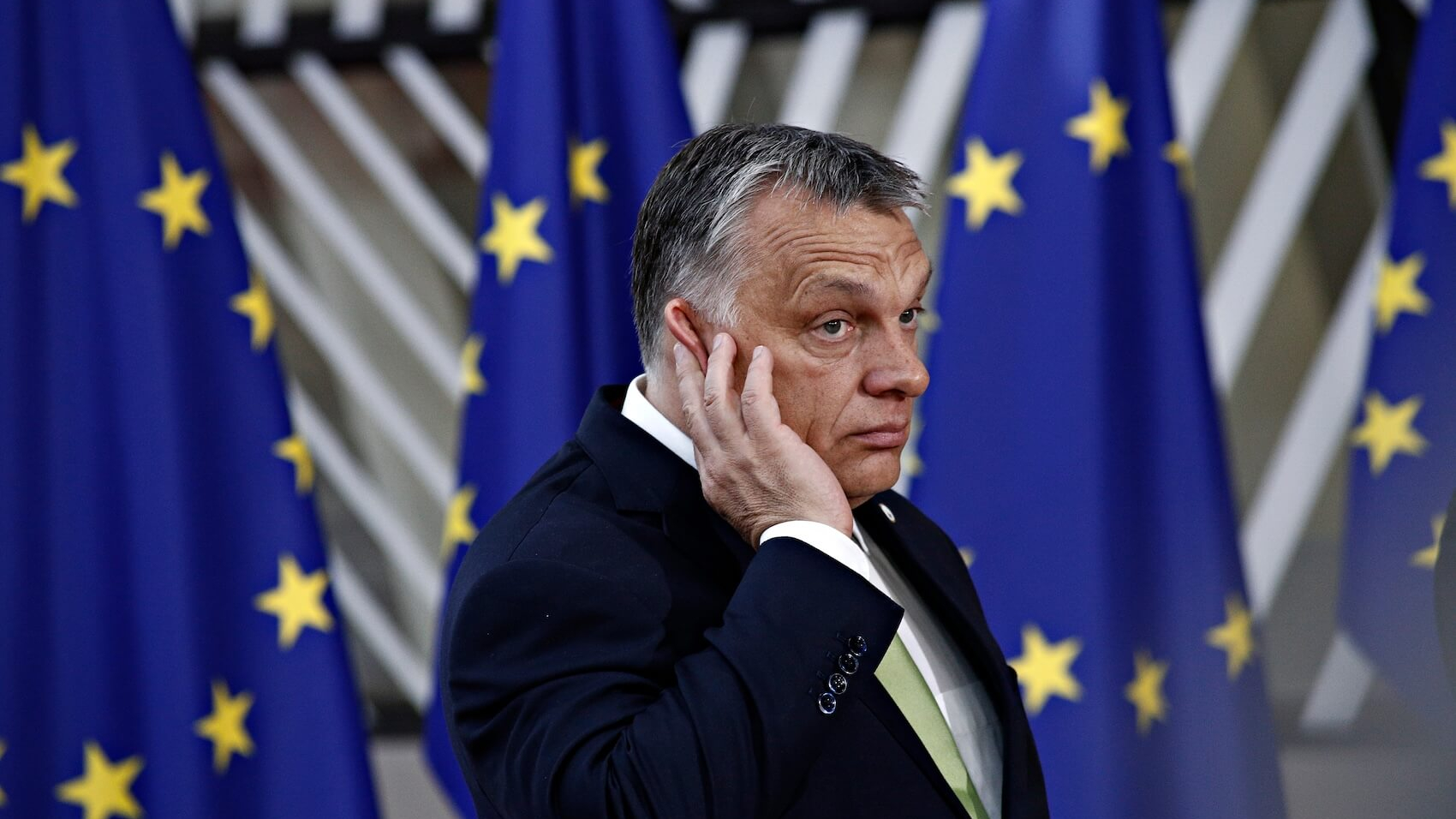

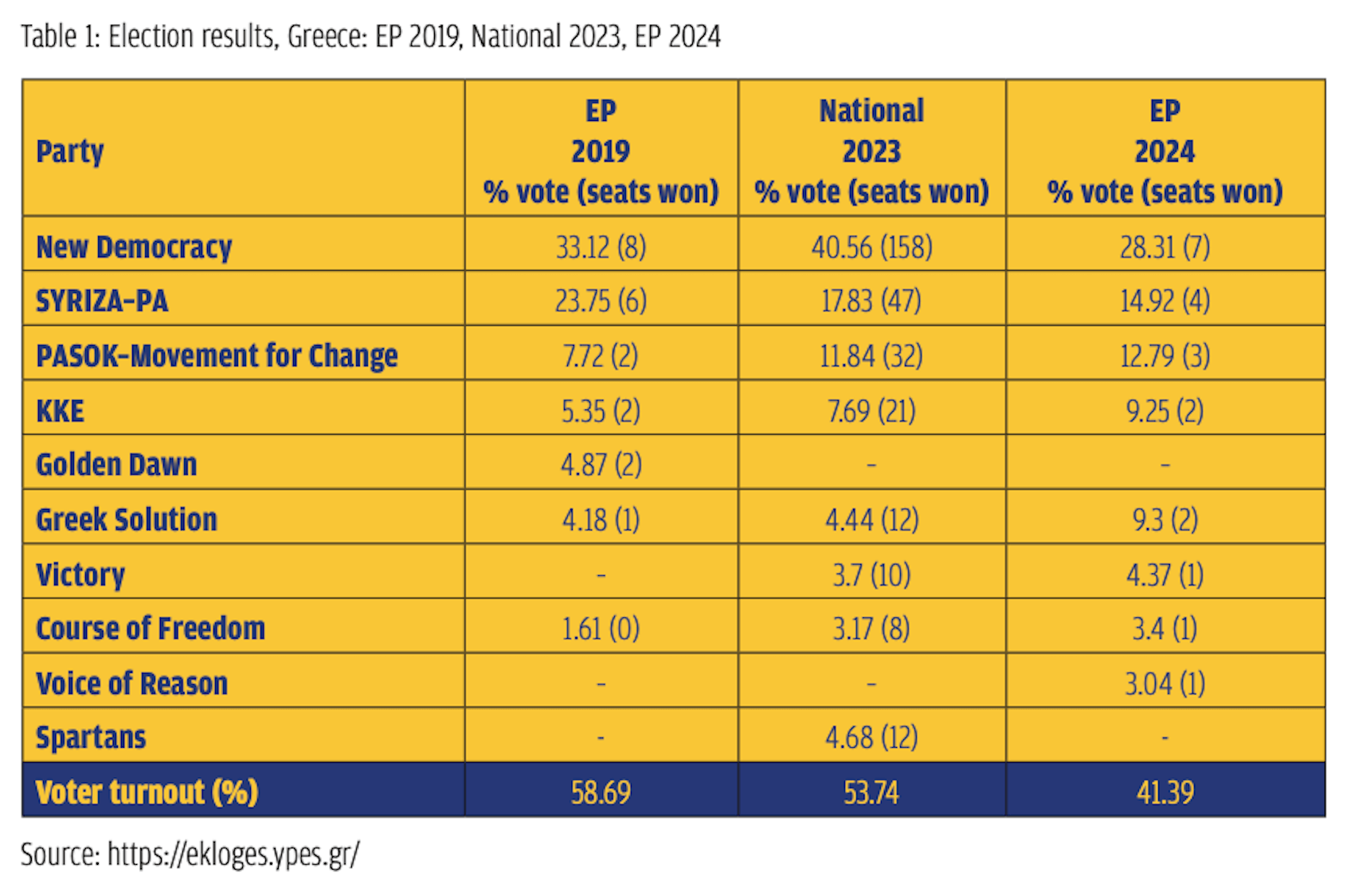
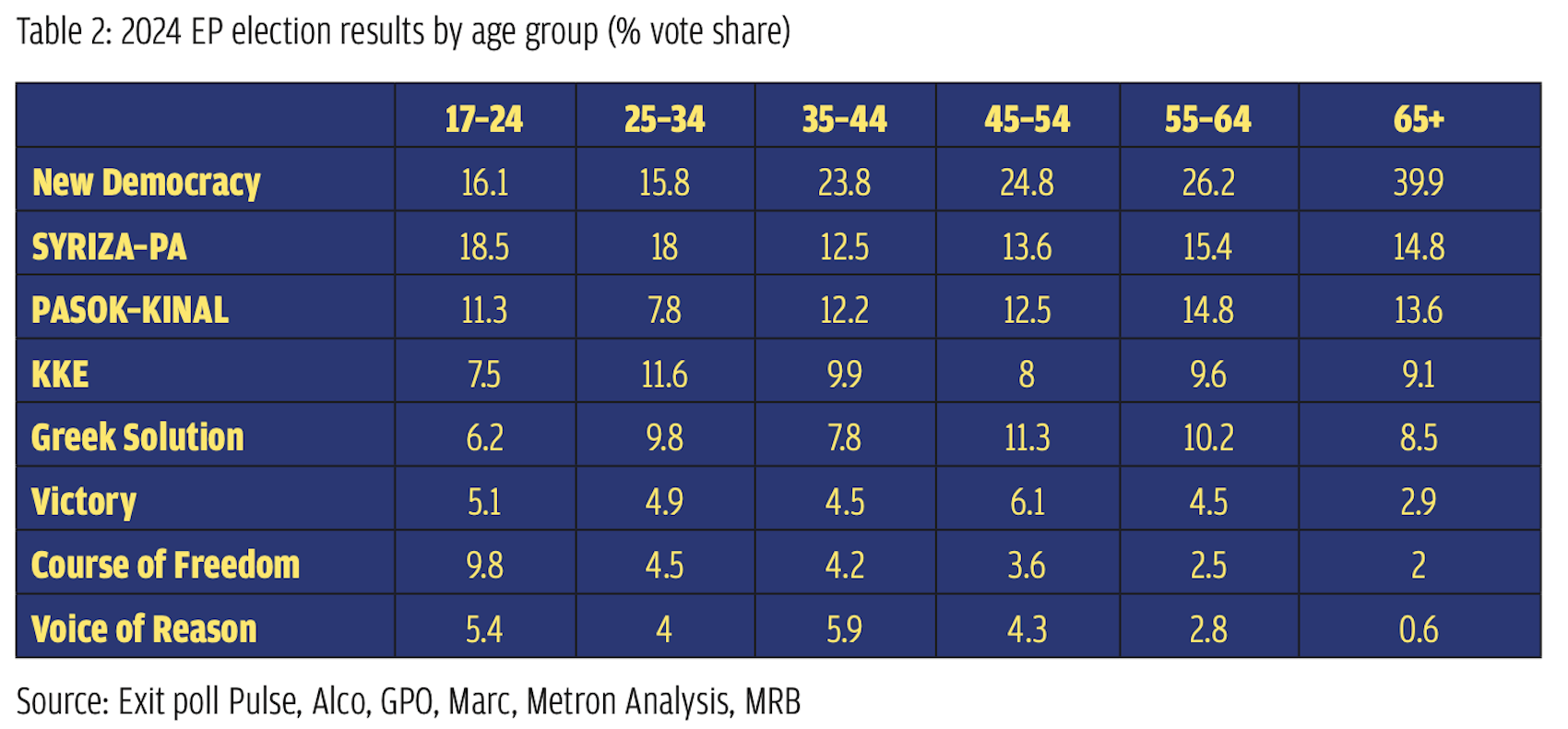
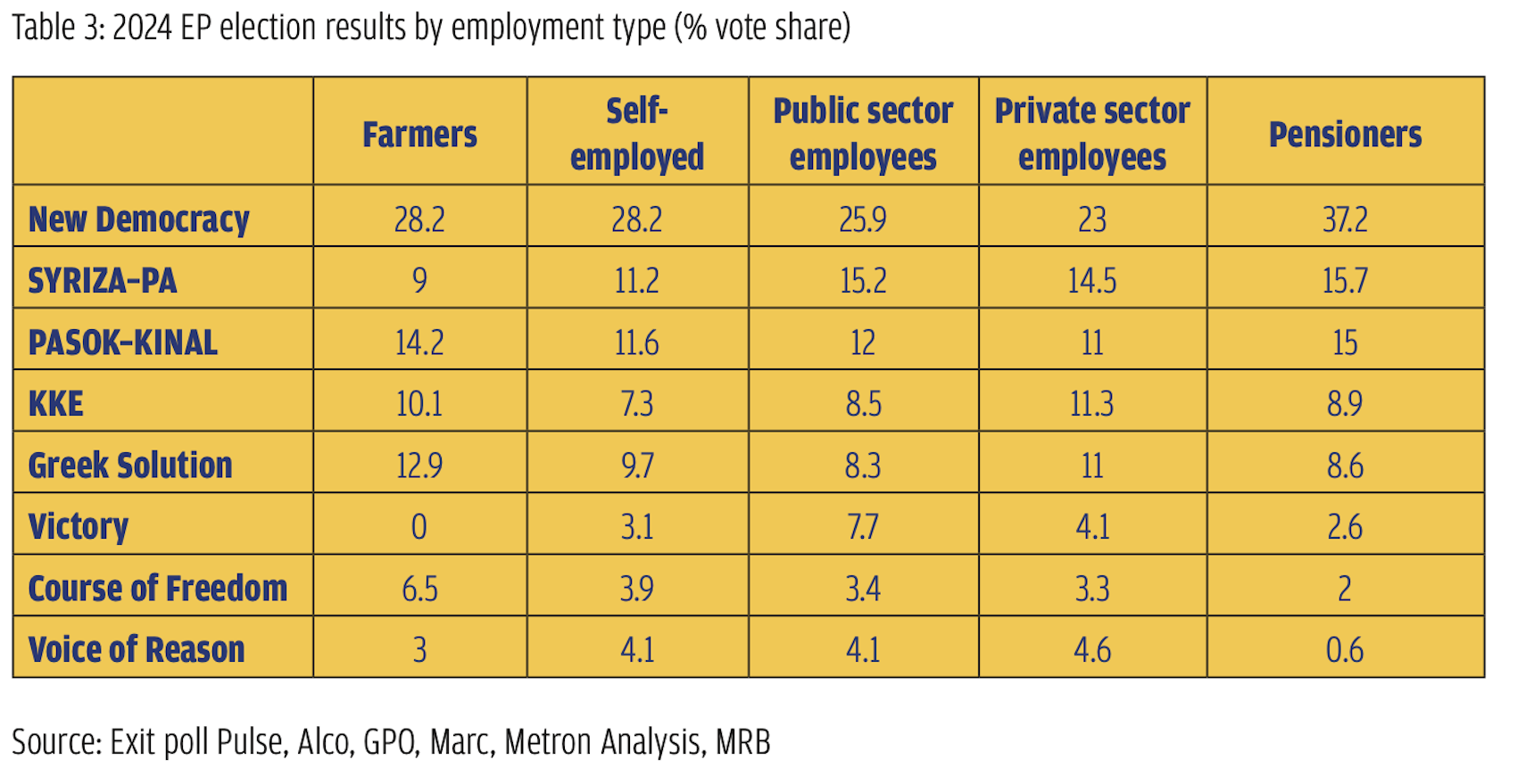 There is also an interesting geographic dimension to the far-right populist vote (for a European perspective, see also Ejrnæs et al., 2024). In many districts in Northern Greece, these parties received above-average results. Specifically, Greek Solution came second in six electoral districts of the north, including Imathia (18.42%), Pella (17.28%), Kilkis (16.54%), Thessaloniki B (15.82%), Serres (15.64%), and Drama (15.52%).
There is also an interesting geographic dimension to the far-right populist vote (for a European perspective, see also Ejrnæs et al., 2024). In many districts in Northern Greece, these parties received above-average results. Specifically, Greek Solution came second in six electoral districts of the north, including Imathia (18.42%), Pella (17.28%), Kilkis (16.54%), Thessaloniki B (15.82%), Serres (15.64%), and Drama (15.52%).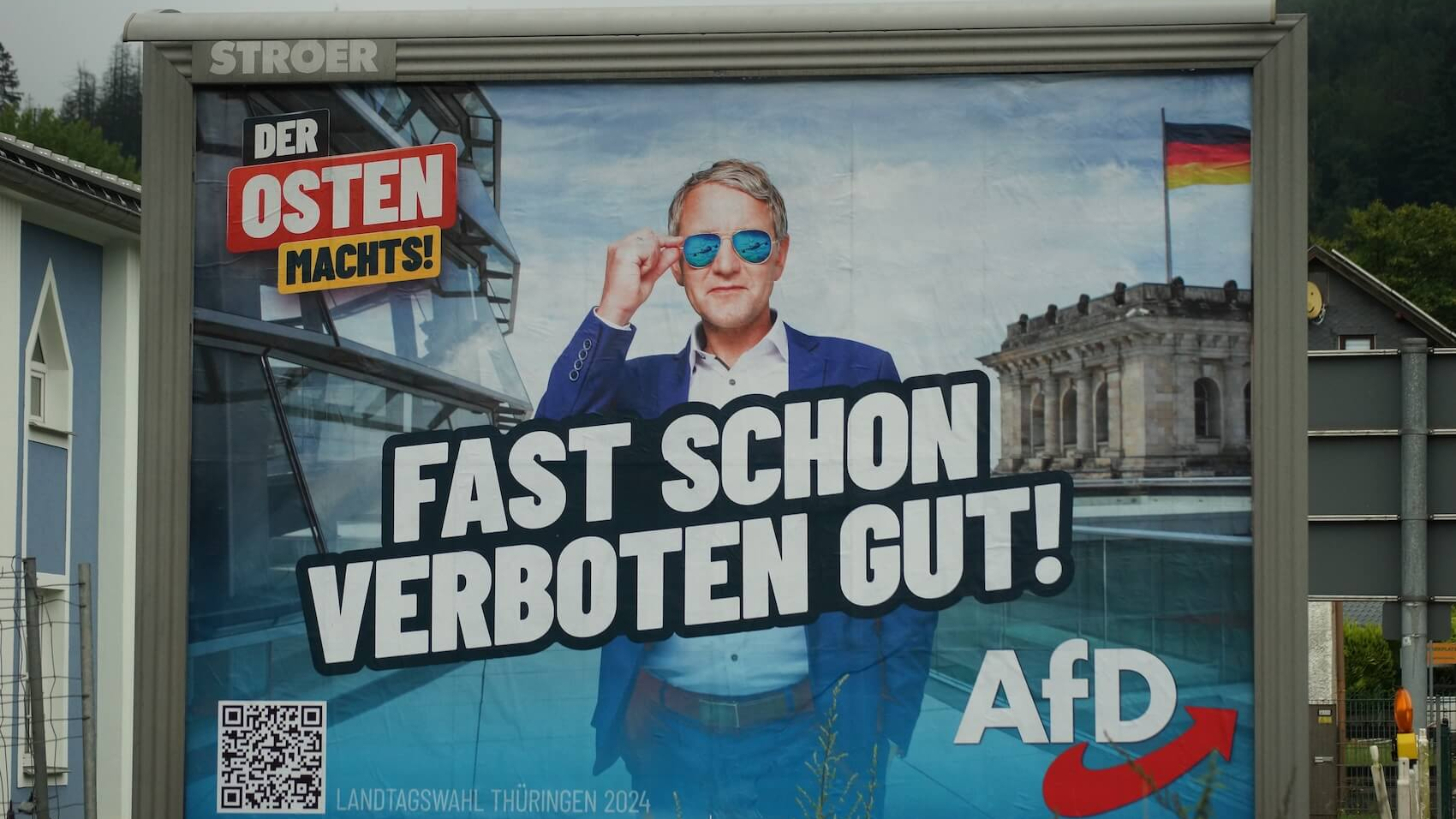

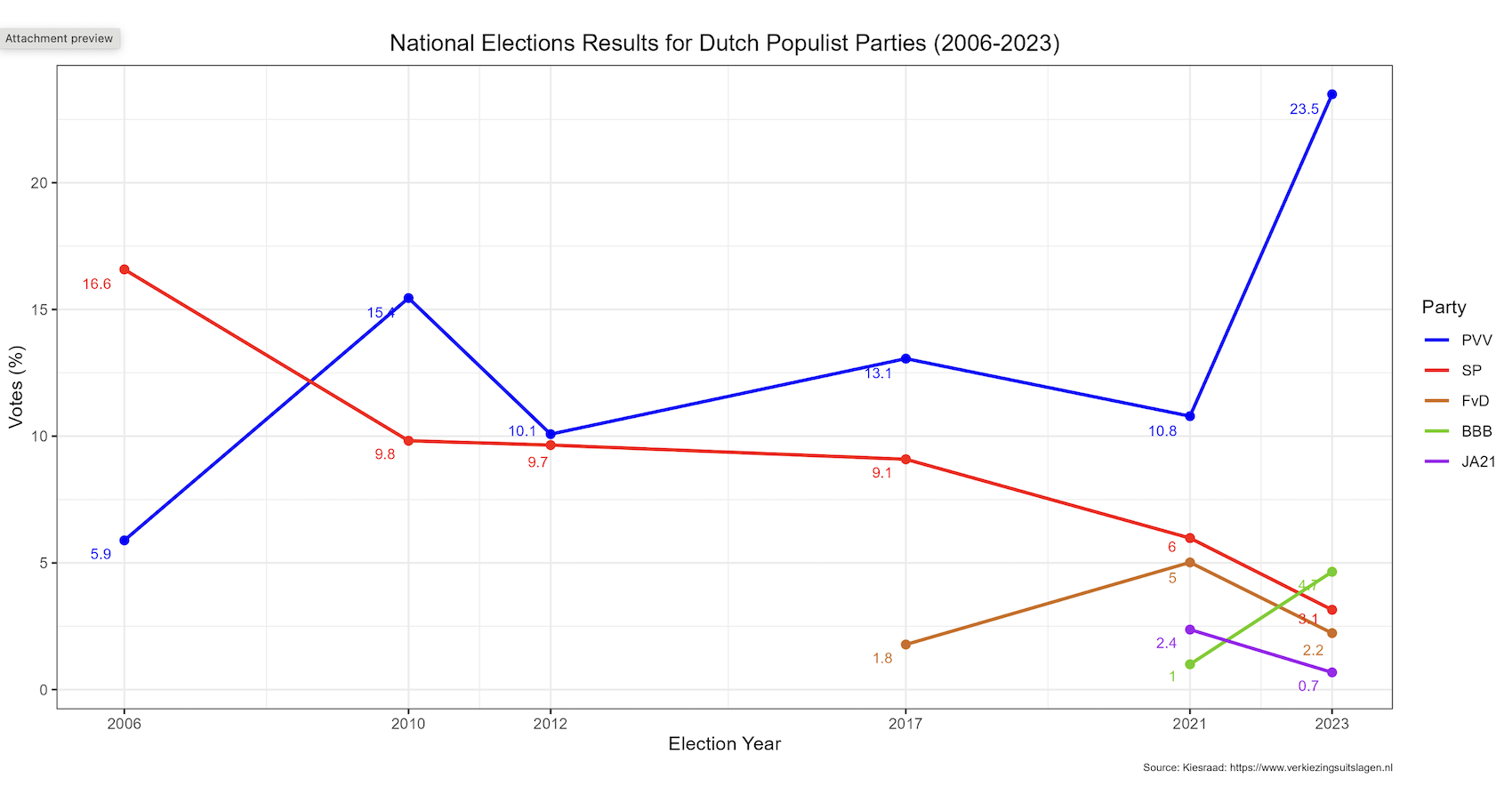
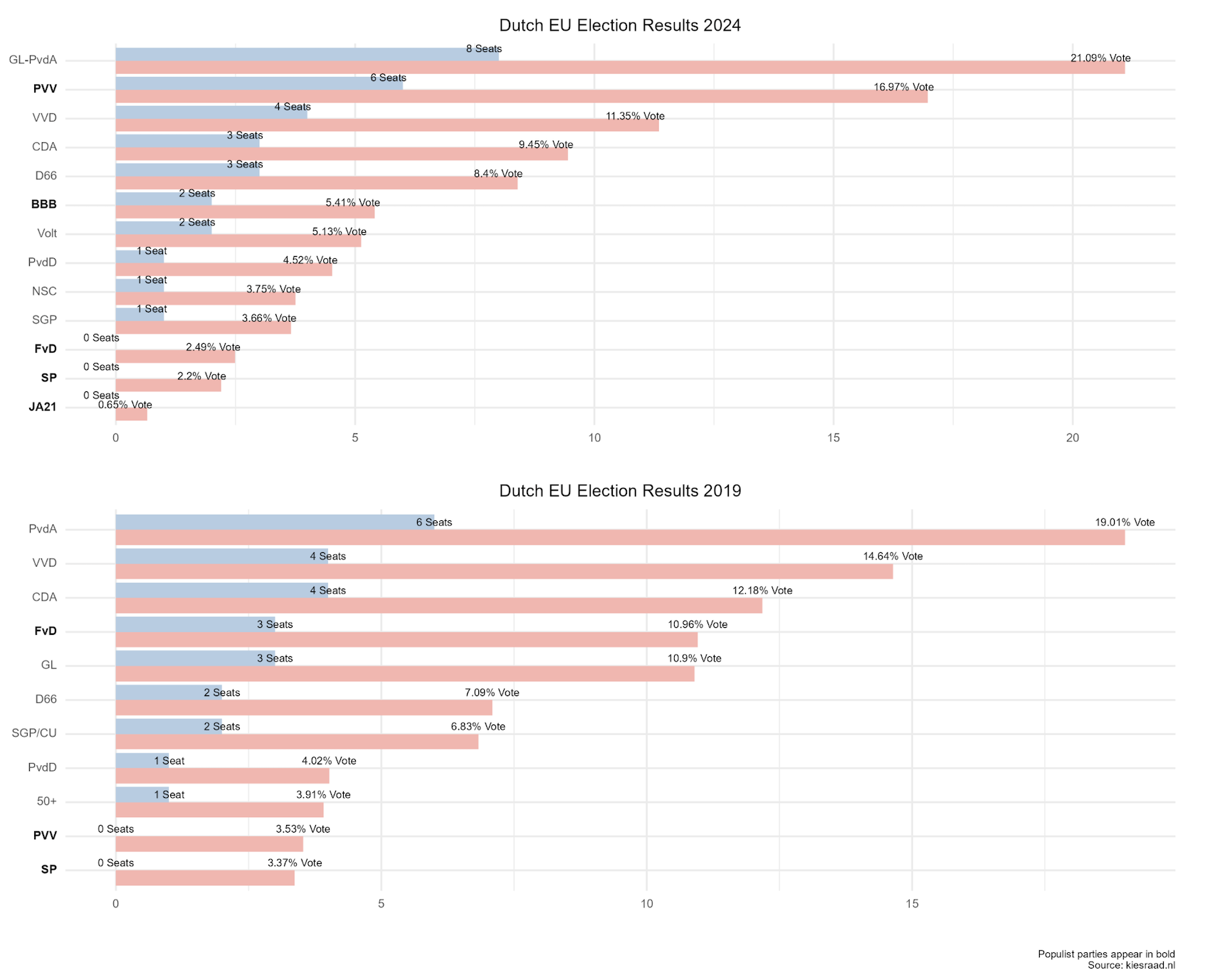
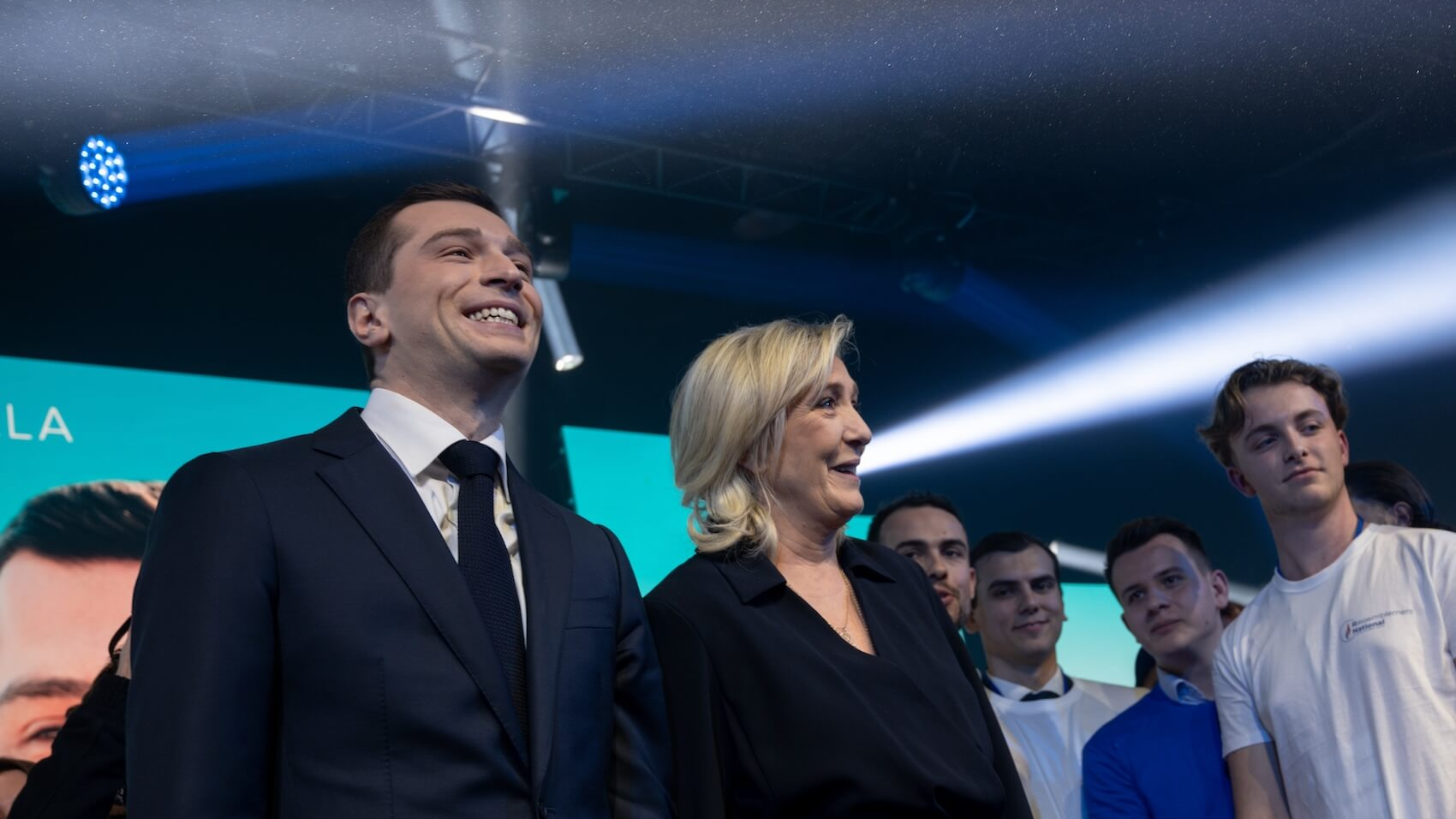

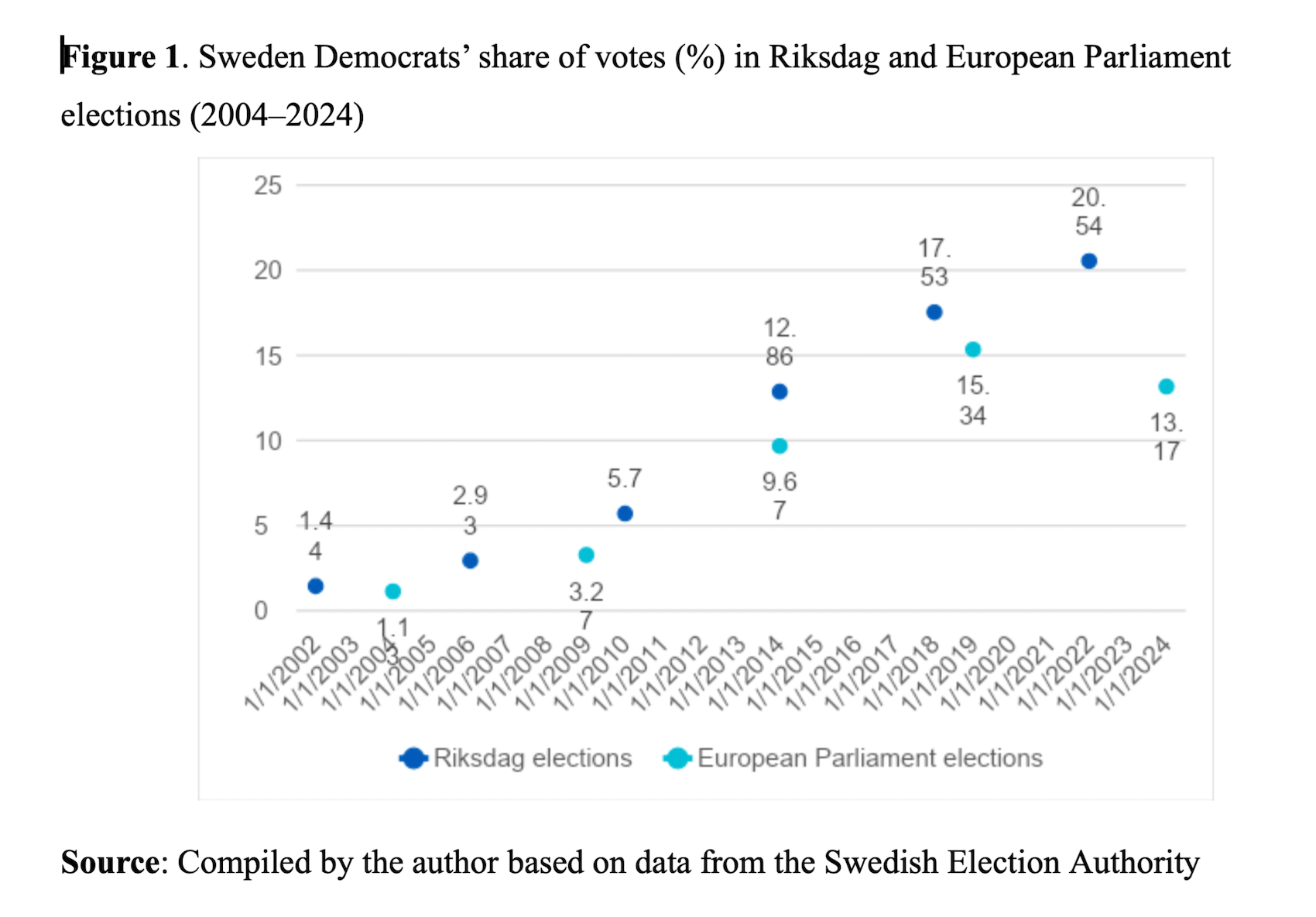
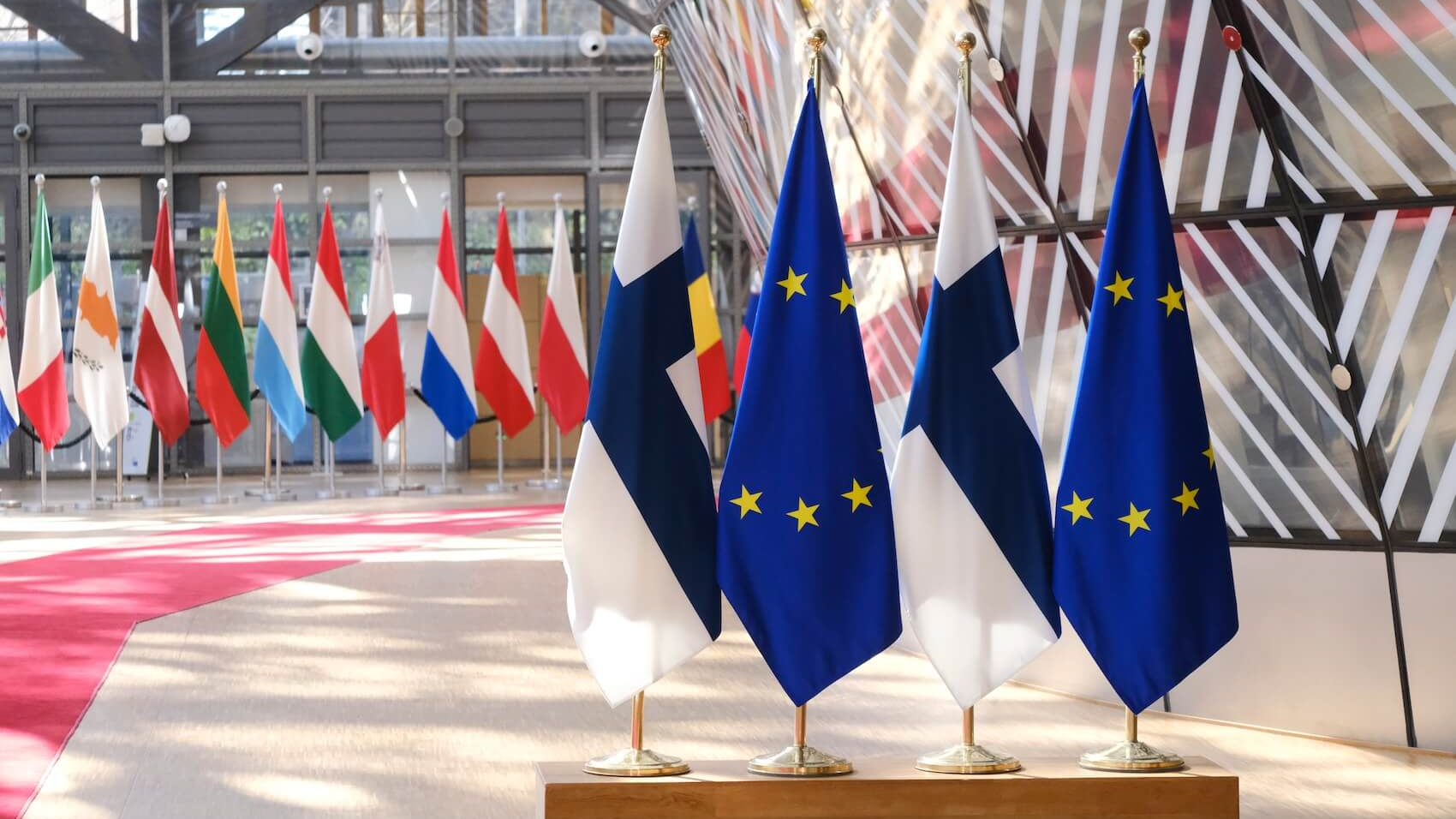
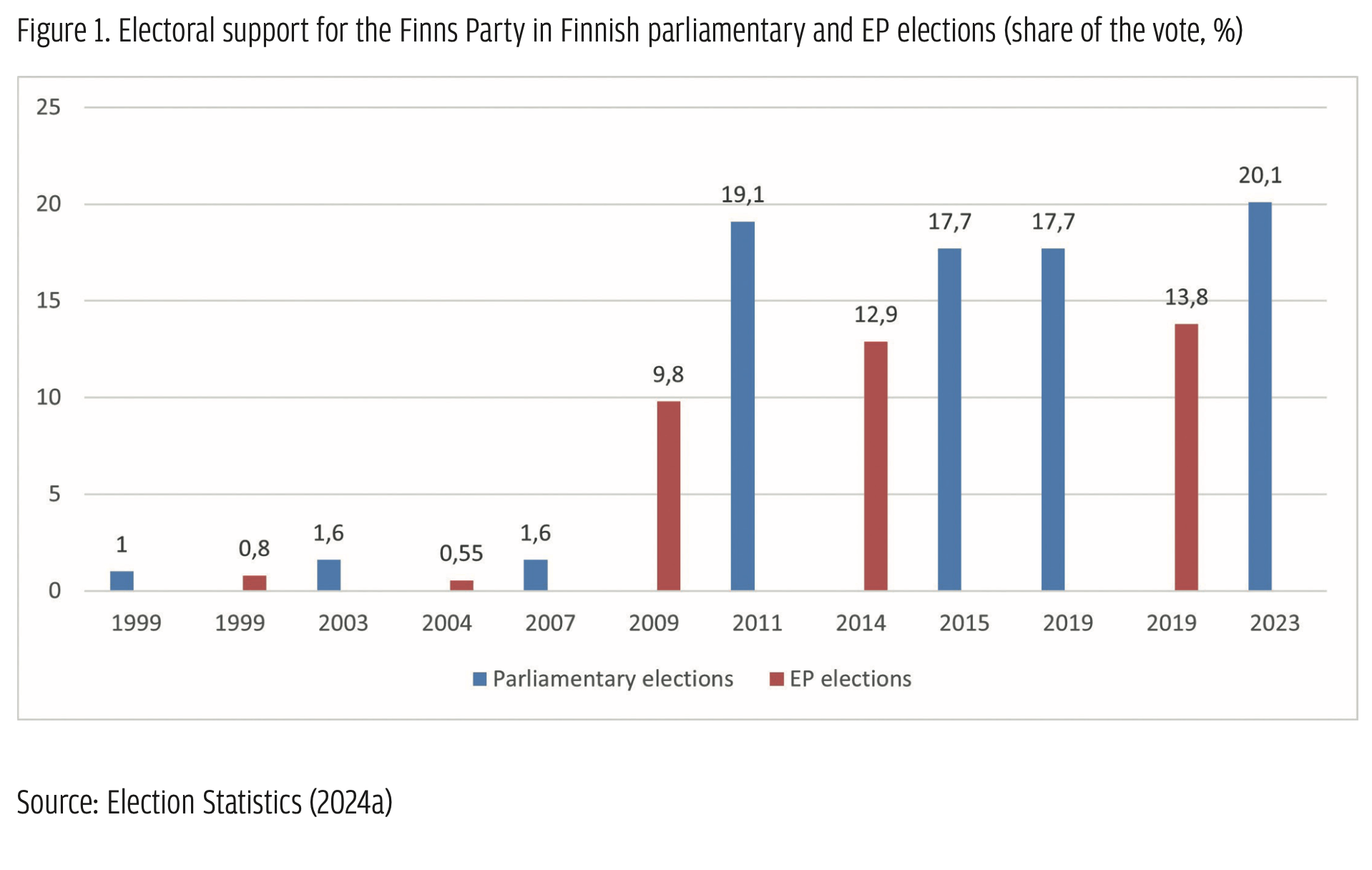
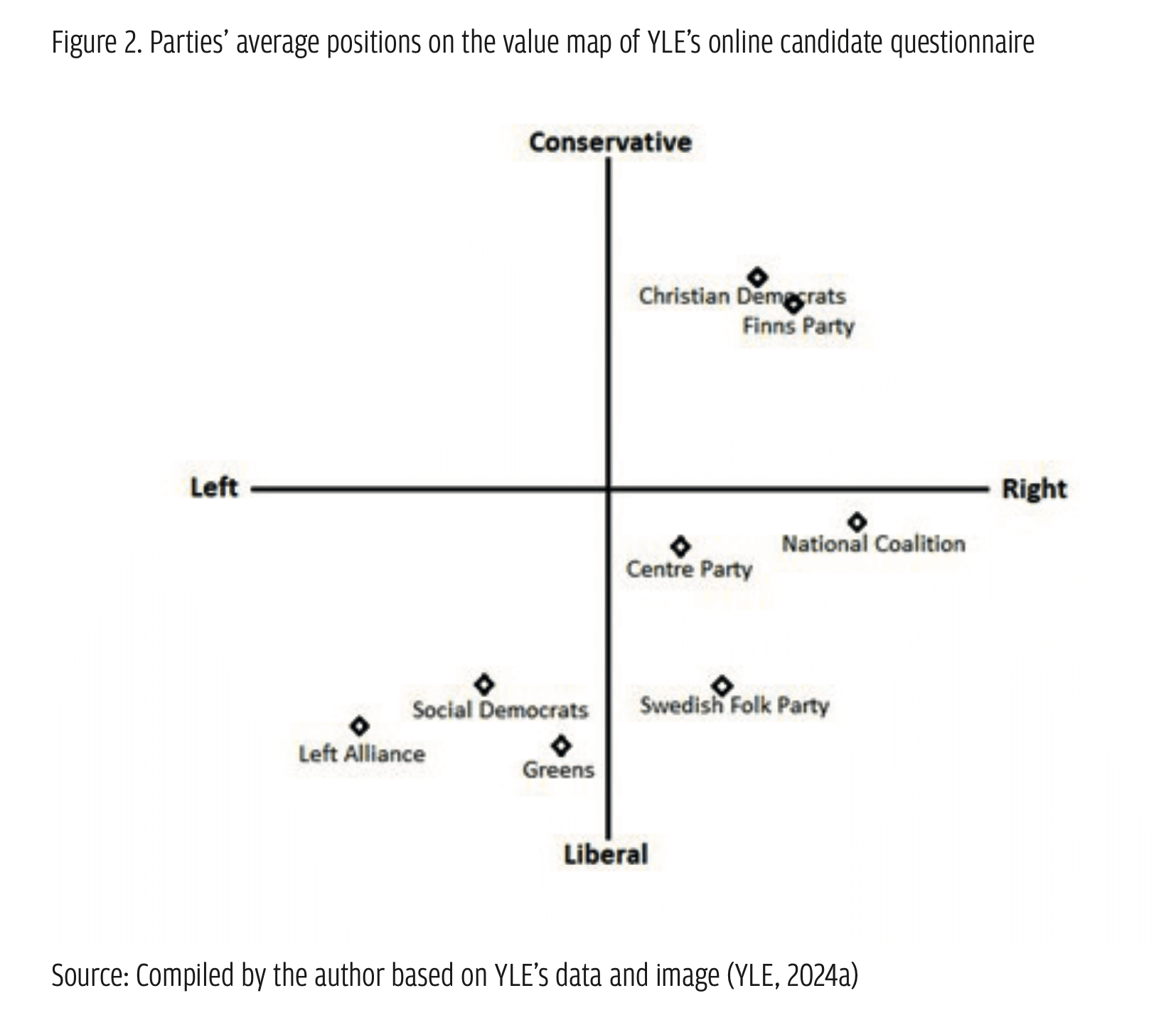
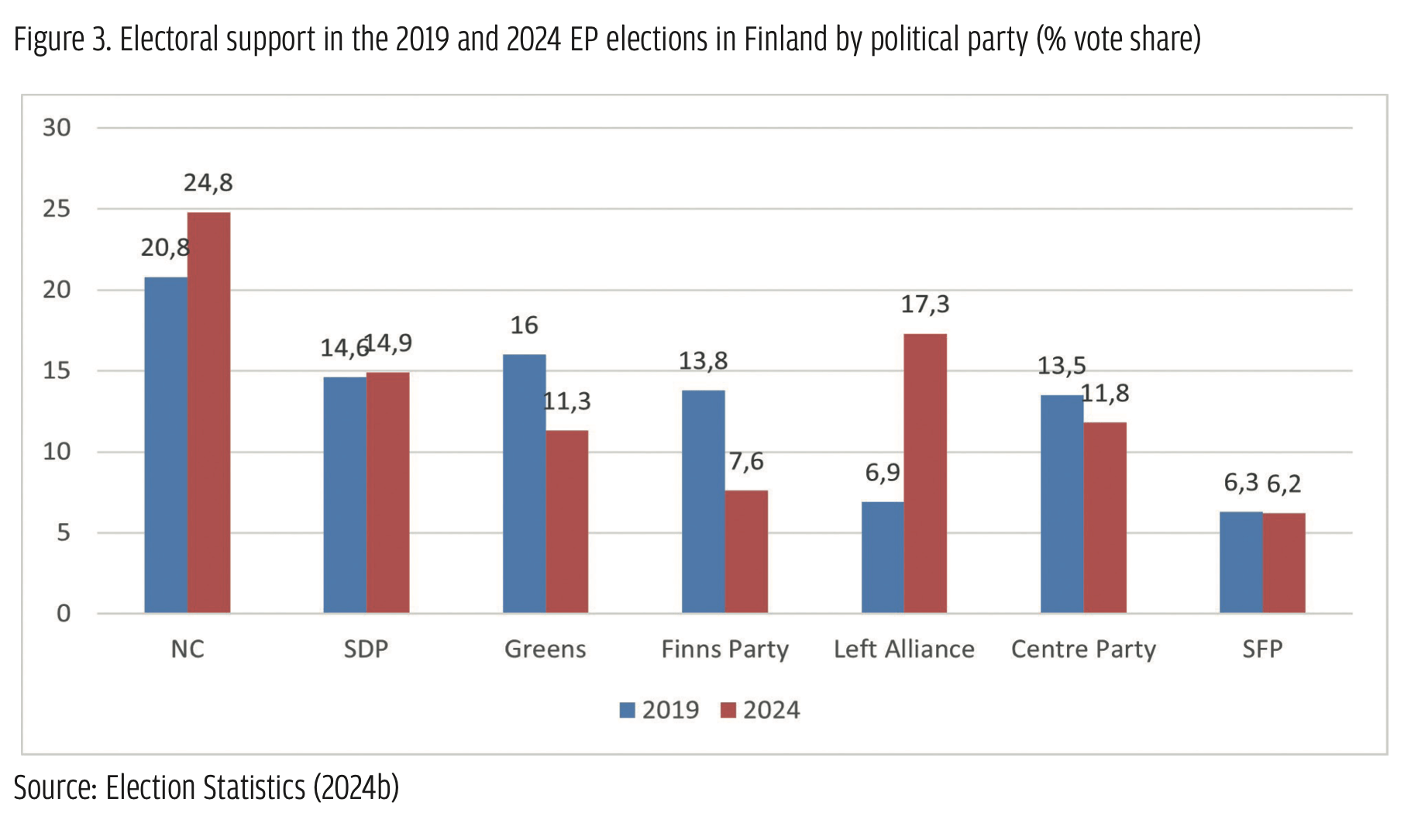

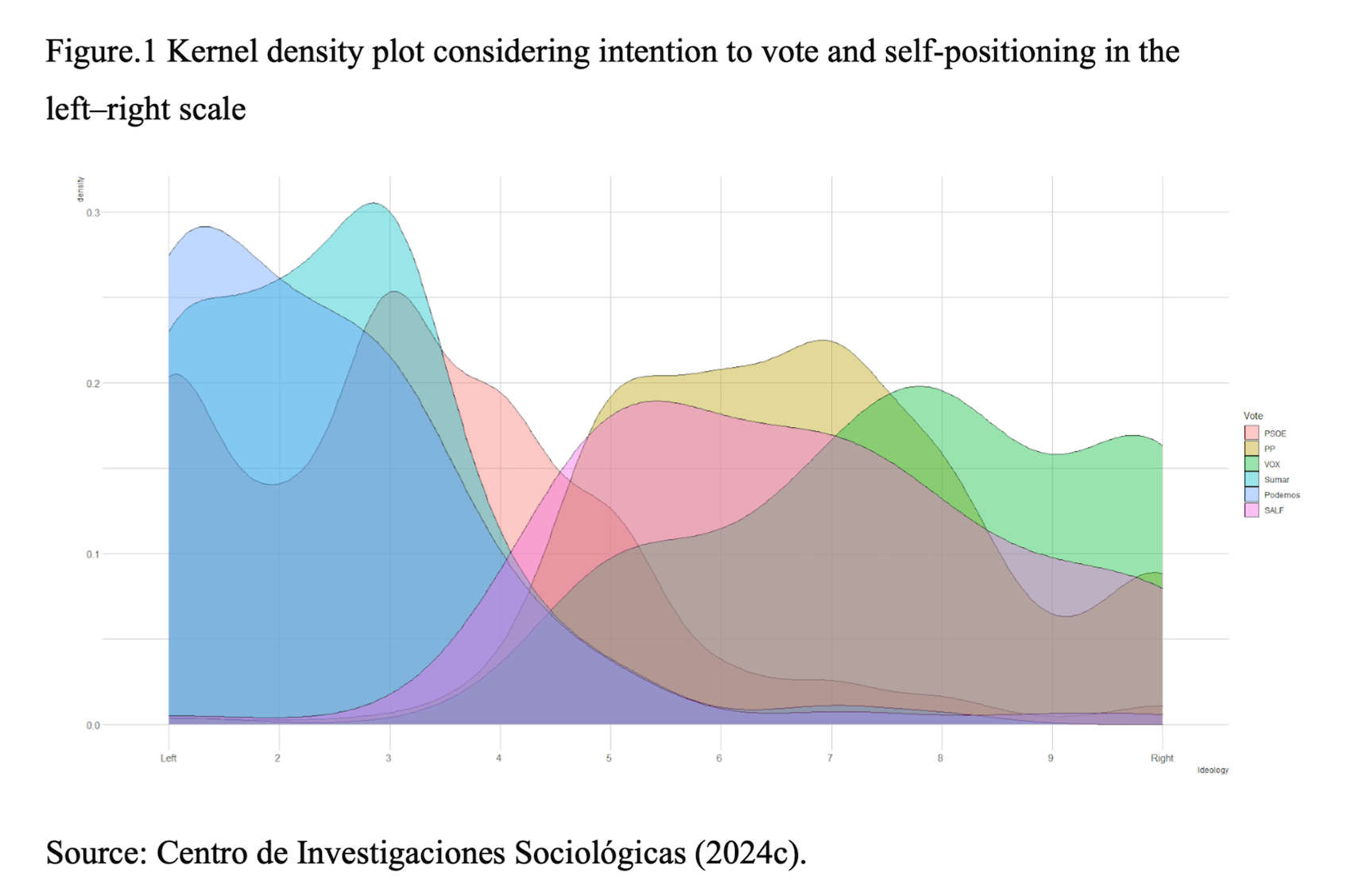

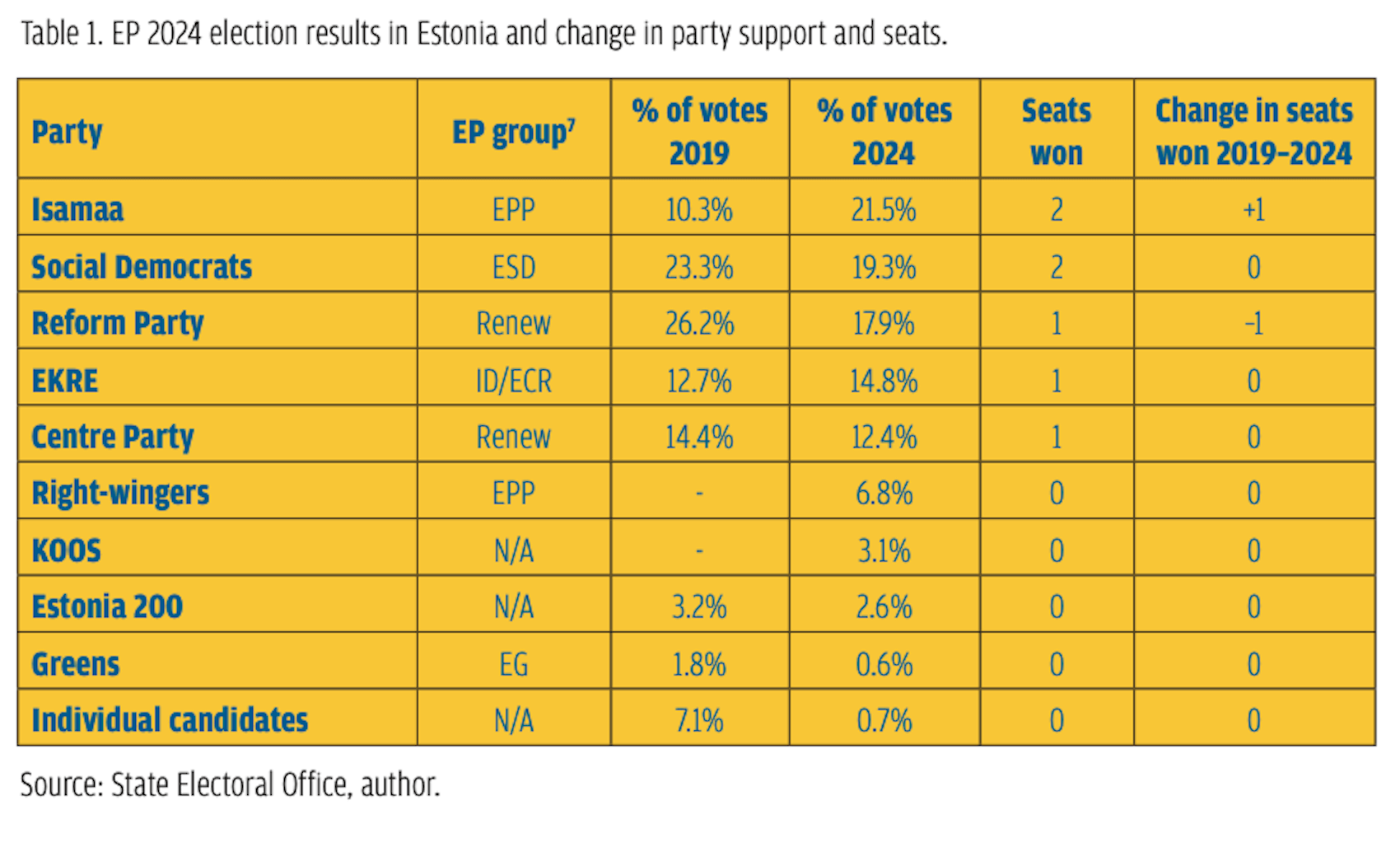 As there are no exit polls conducted in Estonia, it is not possible to interpret the results in terms of socio-demographic or attitudinal profiles of the voters. However, what is evident from available data is that Isamaa performed best in almost all counties except for the largest cities, Tallinn and Tartu and the predominantly Russian-speaking Ida-Viru County in the northeast. Isamaa’s success has been popularly interpreted both as a result of its antigovernment campaign as well as the success of Jüri Ratas’ personal campaign. However, pre-election survey data suggests that mistrust in the Estonian government was a poor predictor of support for Isamaa and instead predicted support for KOOS and EKRE (Keerma, 2024). Furthermore, Isamaa was perceived as having ownership in defence and foreign policy by lower educated voters, while more highly educated voters perceived the Reform Party as the issue owner (ibid).
As there are no exit polls conducted in Estonia, it is not possible to interpret the results in terms of socio-demographic or attitudinal profiles of the voters. However, what is evident from available data is that Isamaa performed best in almost all counties except for the largest cities, Tallinn and Tartu and the predominantly Russian-speaking Ida-Viru County in the northeast. Isamaa’s success has been popularly interpreted both as a result of its antigovernment campaign as well as the success of Jüri Ratas’ personal campaign. However, pre-election survey data suggests that mistrust in the Estonian government was a poor predictor of support for Isamaa and instead predicted support for KOOS and EKRE (Keerma, 2024). Furthermore, Isamaa was perceived as having ownership in defence and foreign policy by lower educated voters, while more highly educated voters perceived the Reform Party as the issue owner (ibid).